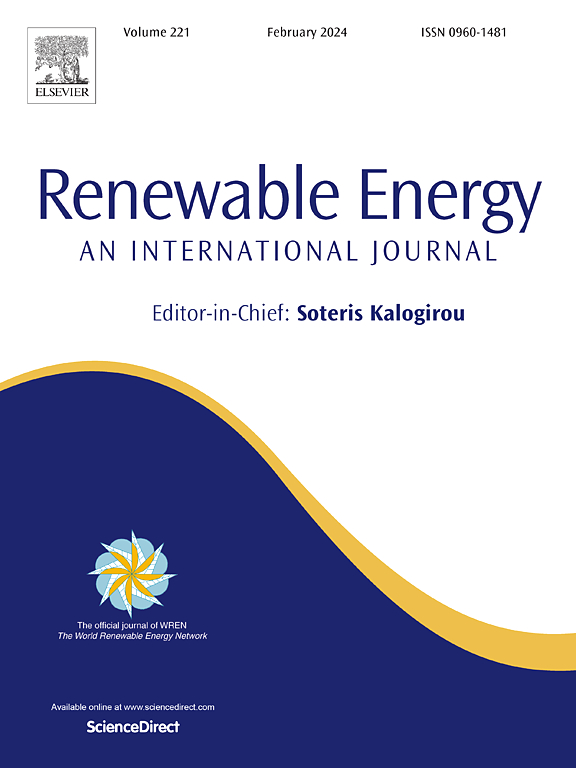Long-term effects of liquid nanoparticles on algal growth and photosynthetic biogas upgrading
IF 9
1区 工程技术
Q1 ENERGY & FUELS
引用次数: 0
Abstract
Photosynthetic biogas upgrading relies on a microalgal–bacterial consortium that simultaneously removes CO2 and H2S from biogas. However, the process still faces a few challenges. In this context, the performance of a pilot high-rate algal pond devoted to photosynthetic biogas upgrading and nutrient valorization from real digestate supplemented with carbon-coated zero-valent iron liquid nanoparticles (L-NPs) was evaluated. Additionally, the influence of the biogas flowrate (55, 75 and 95 L d−1) on photosynthetic biogas upgrading performance was assessed. The addition of 2 mL L−1 of L-NPs, combined with intensive biomass harvesting, promoted higher biomass productivity (89 g m−2 d−1) without negatively impacting algal photosynthetic activity or biogas upgrading performance. The presence of soluble organic carbon in the L-NPs suggested that the biostimulation of microalgal growth supported the high algal biomass productivities recorded. At the highest biogas flowrate (75 and 95 L d−1), an increased CO2 and CH4 content in the upgraded biogas was achieved due to a reduced contact time between the recirculating cultivation broth and the biogas, which minimized the stripping of N2 and O2. Moreover, the biomethane reached CH4 concentrations of 94.9 % (v/v) and low levels of CO2 (2.1 %), O2 (0.4 %), and N2 (2.6 %) at biogas flowrate of 75 L d−1.
液体纳米颗粒对藻类生长和光合沼气升级的长期影响
光合作用沼气升级依赖于微藻-细菌联盟,同时从沼气中去除CO2和H2S。然而,这一进程仍面临一些挑战。在此背景下,研究了一个中试高速率藻池在添加碳包覆的零价铁纳米颗粒(L-NPs)的情况下,用于光合作用的生物气升级和实际消化液的营养价值增值。此外,还评估了沼气流量(55、75和95 L d−1)对光合沼气升级性能的影响。添加2 mL L−1的L- nps,结合集约化生物量收获,促进了更高的生物量生产力(89 g m−2 d−1),而不会对藻类光合活性或沼气升级性能产生负面影响。L-NPs中可溶性有机碳的存在表明,微藻生长的生物刺激支持了记录的高藻类生物量生产力。在最高沼气流量(75和95 L d - 1)下,由于减少了循环培养液与沼气之间的接触时间,减少了N2和O2的剥离,使升级后的沼气中CO2和CH4含量增加。此外,在75 L d−1的沼气流量下,生物甲烷的CH4浓度达到94.9% (v/v), CO2(2.1%)、O2(0.4%)和N2(2.6%)的浓度较低。
本文章由计算机程序翻译,如有差异,请以英文原文为准。
求助全文
约1分钟内获得全文
求助全文
来源期刊

Renewable Energy
工程技术-能源与燃料
CiteScore
18.40
自引率
9.20%
发文量
1955
审稿时长
6.6 months
期刊介绍:
Renewable Energy journal is dedicated to advancing knowledge and disseminating insights on various topics and technologies within renewable energy systems and components. Our mission is to support researchers, engineers, economists, manufacturers, NGOs, associations, and societies in staying updated on new developments in their respective fields and applying alternative energy solutions to current practices.
As an international, multidisciplinary journal in renewable energy engineering and research, we strive to be a premier peer-reviewed platform and a trusted source of original research and reviews in the field of renewable energy. Join us in our endeavor to drive innovation and progress in sustainable energy solutions.
 求助内容:
求助内容: 应助结果提醒方式:
应助结果提醒方式:


